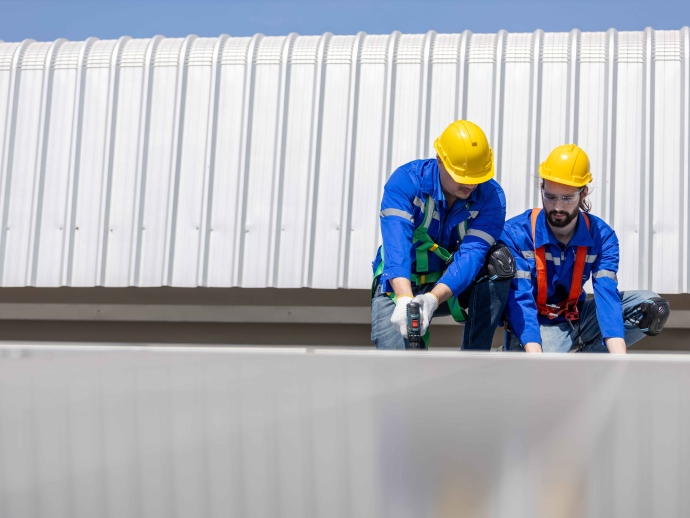Energy Cost Reduction: How Reflective Roofing Saves DFW Businesses Money

Energy costs are a significant concern for businesses in the Dallas-Fort Worth (DFW) area, particularly during the sweltering summer months when air conditioning needs peak. One effective strategy that has emerged for reducing these costs is the installation of reflective roofing. This innovative roofing solution not only helps to lower energy expenses but also contributes to a more sustainable environment.
What is Reflective Roofing?
Reflective roofing, often referred to as "cool roofs," is designed to reflect more sunlight and absorb less heat than standard roofing materials. These roofs are typically made from light-colored materials or coatings that enhance their solar reflectance. By minimizing heat absorption, reflective roofs significantly reduce the demand for air conditioning, leading to lower energy consumption and costs.
Key Benefits of Reflective Roofing
-
Energy Savings: Studies indicate that increasing the solar reflectance of a roof can cut cooling energy use by 10% to 20% for buildings directly beneath the roof. In DFW's hot climate, this translates into substantial savings on electricity bills during peak cooling periods.
-
Extended Roof Lifespan: Reflective roofs experience less thermal stress due to reduced temperature fluctuations. This longevity means fewer repairs and replacements, which can be a significant cost-saving factor for businesses.
-
Environmental Impact: By lowering energy consumption, reflective roofing contributes to reduced greenhouse gas emissions. This aligns with broader sustainability goals and can enhance a company's reputation as an environmentally responsible entity.
-
Improved Indoor Comfort: Reflective roofs maintain cooler indoor temperatures, creating a more comfortable work environment. This can lead to increased employee productivity and satisfaction.
Financial Implications for DFW Businesses
The financial benefits of installing reflective roofing in DFW are compelling. A report indicates that retrofitting just 80% of commercial buildings in the U.S. with cool roofs could yield annual energy cost savings exceeding $735 million. For local businesses, these savings can be even more pronounced given the region's high temperatures.
Cost Savings Breakdown
-
Cooling Costs: Businesses can expect to save up to 20% on cooling costs by switching to reflective roofing materials. For example, if a business spends $10,000 annually on cooling, this could result in savings of $2,000 per year.
-
Rebates and Incentives: Many utility companies offer rebates for businesses that install cool roofs. In some cases, businesses can receive financial incentives that cover a portion of installation costs, further enhancing the return on investment.
-
Tax Benefits: Cool roof coatings may qualify as maintenance expenses under tax regulations, allowing businesses to write off these costs in the year they are incurred rather than capitalizing them over several decades.
Implementation Considerations
When considering reflective roofing solutions, businesses in DFW should evaluate several factors:
-
Material Selection: The effectiveness of reflective roofing depends significantly on the materials used. Options include highly reflective paints, tiles, and membranes that meet Energy Star® standards.
-
Installation Process: Installing a reflective roof can often be done without disrupting business operations. Many contractors can perform retrofits during off-hours or weekends.
-
Maintenance Needs: While reflective roofs generally require less maintenance than traditional roofs, periodic inspections are essential to ensure their performance remains optimal over time.
Conclusion
Reflective roofing presents a viable solution for DFW businesses looking to reduce energy costs while contributing positively to environmental sustainability. With significant potential savings on cooling expenses, extended roof lifespans, and enhanced indoor comfort, the switch to reflective roofing is not only an economically sound decision but also an investment in a greener future. As more businesses recognize these benefits and take action, DFW can move towards a more energy-efficient landscape that supports both economic growth and environmental stewardship.

